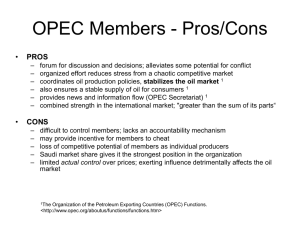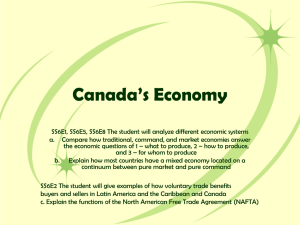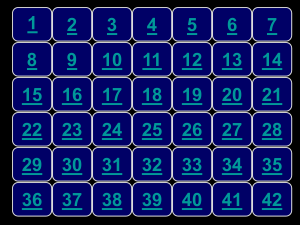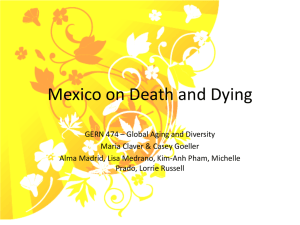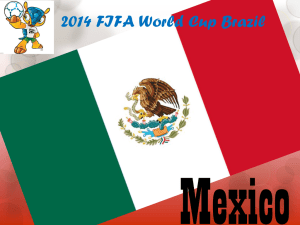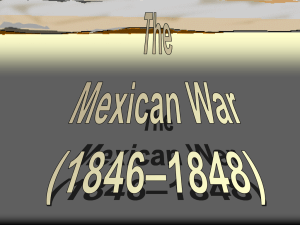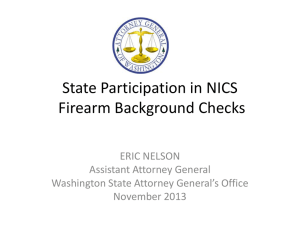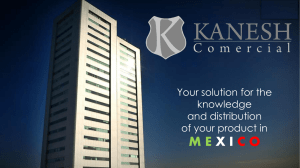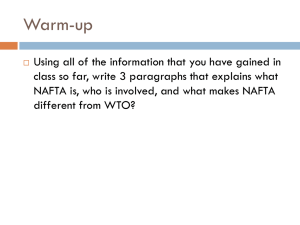Powerpoint 3 Global groupings
advertisement
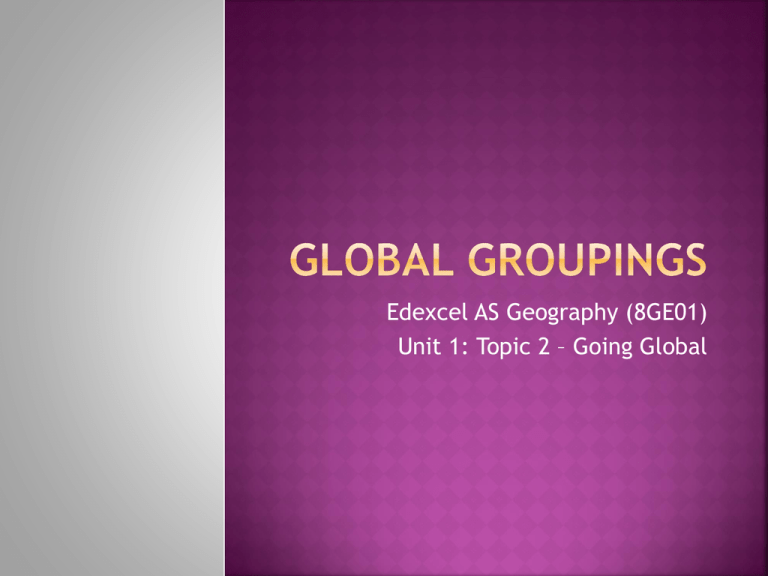
Edexcel AS Geography (8GE01) Unit 1: Topic 2 – Going Global Enquiry question: What are the main groupings of nations and what differences in levels of power and wealth exist? According to the spec, students need to learn: The disparities in global wealth and poverty, through broad economic and political groupings of countries (e.g. NICs, OPEC, LEDCs, LDCs, OECD and trade blocs like NAFTA). Traditionally the world was viewed as developed core (north) or developing periphery (south) however globalisation has made this more complex as some countries are poor but have rich elites and make it hard to generalise. Countries are now classified as High, Middle or Low, using these indicators and then grouped politically, economically or by companies (TNC’S): Economic Development Indicators Gross National Product (all trade) The value of all the goods and services earned by a company including companies working abroad (TNCs). Gross Domestic Product (internal trade) The value of all the goods and services earned by a country excluding foreign earnings. Per Capita Statistics providing an average per person. Purchasing Power Parity Relates average earnings to prices and what they will actually buy. Human Development Indicators Physical Quality Of Life Index Made up of life expectancy, literacy rates and infant mortality. Human Development Index Human Suffering Index Made up of life expectancy, literacy rates, infant mortality and school enrolment. Made up of daily calorie intake, access to clean water, inflation rate, access to communications, political freedom and civil rights. Development Indicators 1. GNP 2. GDP 3. Balance of trade (Imports-Exports) 4. Natural increase 5. Life expectancy 6. Number of doctors per capita 7. Proportion of people living in urban areas 8. Dependency ratio 9. HDI Ratio Countries can be put into broad economic and political groups because wealth and power aren’t shared out equally around the world These groups change over time as the wealth and power of countries change For example, most countries used to be classed as either More or Less Economically Developed It’s now thought that this system is too simplistic – there are too many stages of economic development to put all countries into only 2 categories. The Brandt Line (or also known as the North – South Divide) In the ‘global north’ living conditions are high due to high wealth In the ‘global south’ living conditions are low due to low amounts of wealth G8 + 5 – Aim to create deeper international co-operation and an understanding of climate change and international trade. OECD (Organisation for Economic Cooperation and Development) It is a global ‘think tank’ for 30 of the world’s wealthiest nations and ensures wealth is distributed evenly across the nations. G20 - This actually has 23 members from the developing world, and was formed in 2004 with a focus on agricultural trade. LDCs (Least Developed Countries) 50poorest countries classified by the UN Ex-soviet states – After the break up of the soviet Union in ’89, there were 15 ex soviet states remaining, which scored poorly in HDI and GDP NICs (Newly Industrialised Countries) Countries undergoing industrialisation where average earning and exports have increased dramatically since the 70’s. China. OPEC (Organisation for Petroleum Exporting Countries) - Established to regulate the global oil market. Stabilise prices and ensure a fair return for the 11 member states who between them supply 40% of the world’s oil. BRICS (Brazil, Russia, India , China and now South Africa) - They all have newly advanced economic development. Least Developed Countries (LDCs) are a group of around 50 countries that are defined by very low incomes, poor health, low education, economic instability and their heavy debt to richer countries, e.g. Mozambique, Sudan, Ethiopia, Afghanistan Their economies are usually based on agriculture, so crop failures can lead to economic disaster Countries are moved out of the LDC group when conditions improve, e.g. Botswana The majority of LDCs are located in the African continent, with a few located in Asia as well as Oceania, and only one in the Americas (Haiti) Less Economically Developed Countries have started to develop their economies and this can be seen in their increasing GDP, calorie intake per day, birth rates and death rates Eg Egypt, Namibia Newly Industrialised Countries (NICs) aren’t yet classified as developed countries (like the UK), but aren’t thought of as LDCs (like Bangladesh) either. Their economies are usually growing very fast, and there has often been a recent move from a mostly agricultural economy to one involving manufacturing and exporting The term was originally used for the Asian ‘Tiger’ economies of Singapore, Hong Kong, South Korea and Taiwan However, some people now argue they’re fully developed and so shouldn’t be referred to as NICs any more. There’s no official list of NICs, though China brazil and India are currently thought of as NICs The table above presents the list of countries that are consistently considered as NICs Green coloured cells indicate higher value or best performance in index, while yellow coloured cells indicate the opposite The four ‘BRIC’ countries are Brazil, Russia, India and China. They are in the same group as they all have newly advanced economic development. They are middle income countries, which are becoming high income countries. Now they the BRICS as South Africa has just been added very recently! Apparently they are the economies that we expect to lead in the future…..wait and see!!! Russia and some of the surrounding countries in central Asia and eastern Europe used to make up one large state called the Soviet Union A lot of independent countries have been created since the Soviet Union collapsed in 1991 – these are mostly now classed as middle-income countries (E.g. Estonia) Middle-income countries have growing economies, but the growth isn’t as rapid as the NICs and their development hasn’t reached the same level, e.g. Ukraine Recent growth in some ex-Soviet states is due to the exploitation of natural resources E.g. Oil and gas in Kazakhstan The privatisation of industries (state controlled in Soviet times to privately controlled now) has led to economic recovery and growth in many ex-Soviet states E.g. Belarus 1. Armenia; 2. Azerbaijan; 3. Belarus; 4. Estonia; 5. Georgia; 6. Kazakhstan; 7. Kyrgyzstan; 8. Latvia; 9. Lithuania; 10. Moldova; 11. Russia; 12. Tajikistan; 13. Turkmenistan; 14. Ukraine; 15. Uzbekistan More Economically Developed Countries have highly developed economies. They have high calorie intakes and GDP. Their birth and death rates are low, indeed their death rates may even exceed the birth rates. Eg UK, Italy The Organisation of Petroleum Exporting Countries (OPEC) is a group of 12 major oilproducing countries African OPECs: Algeria, Angola, Libya Nigeria South American OPECs: Ecuador, Venezuela Middle East OPECs: Iran, Iraq, Kuwait, Qatar, Saudi Arabia, United Arab Emirates (UAE) Half of OPECs are from the Middle East due to the vast oil reserves present there Indonesia was a recent member but left OPEC in 2007 OPEC countries control around 2/3 of global oil reserves Because they’re a large group in control of a large amount of oil, they can make sure they get a fair price from oil-consuming countries (e.g. The UK) Some members have left since OPEC was founded because they wanted to produce more oil than the agreed OPEC quotas allowed (e.g. Gabon) Other countries have been invited to join (e.g. Bolivia and Sudan) The Organisation for Economic Cooperation and Development (OECD) is a group of 34 of the richest and most powerful countries The top eight are called the G8 – one of the world’s most powerful and wealthy groups – it’s made up of Canada, France, Germany, Italy, Japan, Russia, USA and the UK They meet to discuss and provide possible solutions to economic, environmental and social issues Members of the OECD are always changing too, e.g. Potential new members include Brazil, China, India and more recently South Africa (BRICS) 53 countries that all used to be colonies of the UK, except the UK itself and Mozambique. They are all very different countries but try to uphold the same standards There are six major trading blocs around the world APEC – Asian Pacific Economic Cooperation ASEAN – Association of South East Asian Nations Trade Blocs are groups of countries that make agreements to reduce barriers to trade E.g. By removing tariffs (taxes on imported goods) Blocs increase trade between members, and members can work together as a larger organisation to trade with non-members Benefits of membership of a trade bloc are linked to two important concepts: 1) Economies of scale – the advantages companies gain because of increased sales There’s a larger market for all companies within the trade bloc because it’s easier to trade with all other member countries This increases sales. More sales means more products need to be made, so companies can buy the raw materials for their products in greater numbers, saving money Buying raw materials in bulk means each product costs less to make, so companies make more profit 2) Comparative advantage – countries can concentrate on developing specific industries Being in a trade bloc means it’s easier to trade for all the different goods and services a country needs, because trade is less restricted So countries can specialise in producing the things they’re good at making and trade for the things they’re not good at making Production will increase in each member country because they’re concentrating on what they do best, so production will increase in the trade block overall Free trade zone MOST developed trade bloc in the world Common currency Migration increase Judicial System Parliament Humans Rights Act Health and Safety Legislation Cultural links and spread The North American Free Trade Agreement is an example of a trade bloc It’s called NAFTA because it’s an agreement between the countries of North America – USA, Canada and Mexico It’s made trade between the members easier by removing things like import taxes on some goods Trade between all 3 countries has increased but there are other impacts, e.g. Job losses in the USA because the manufacture of some goods has been moved to Mexico, where labour is cheaper The impacts of NAFTA on its members: On the USA All 3 countries would be better off with free trade as they would specialise in producing what they are best at Free trade with Mexico would result in wage and benefit reductions if US firms are to remain competitive against cheap Mexican labour Environmental groups saw more severe environmental damage in Mexico as the environmental laws are lax and often not enforced Multinationals have moved operations to Mexico have gained higher profits Growth of the visible trade deficit worth 16% of US trade Mexican trucks are allowed full access to American highways but they don’t limit the time drivers are allowed to stay behind the wheel On Canada Visible trade with US increased 80% in the first 5 years of NAFTA Visible trade with Mexico has doubled to reach $9 billion in 1998 US investment in Canada reached $147 billion in 1998, up 63% from 1993 More than 1 million new jobs created since its start In 1998, 68% of FDI in Canada came from US and Mexico Concerns from environmental groups regarding damage On Mexico Forcing Mexican companies to adopt higher foreign standards and business practices Makes it impossible for Mexico to go back to poor political choices from the past Mexico has reduced or zero tariffs with 60% of the world Many believe Mexico has become trade dependent – 88% of export go to the US Mexican government did little to prepare the country for the significant changes e.g. before NAFTA farmers were protected by import tariffs and government-price guarantees – now unable to compete with large scale farmers in USA and Canada Read the Geofile photocopied sheet on NAFTA These groupings of countries highlight the inequalities in wealth and power around the world Most of the wealth and power is in the hands of a few countries, e.g. The G8 have over 60% of the gross world product (the total income of the world), and control most of the military power, even though they’re only 8 countries These groupings can also show how wealth and power can change For example, Russia didn’t officially join the G7 (to form the G8) until 1997 because of the power issues of the cold war (a period of political struggle between the USA and the Soviet Union) and economic problems in Russia after the collapse of the Soviet Union Because wealthy countries often form groups together, they become more closely integrated This mean’s they’re more likely to get even wealthier and develop solutions to their own economic, environmental and social problems at a faster rate This can lead to a widening of the gap between poorer and wealthier countries
